How do you make a home for a festival that famously makes the city itself its home? A venue that can accommodate both the visual and the performing arts on a site that speaks to that city’s illustrious past and burgeoning future? In Manchester, England—that industrial powerhouse of the 19th century and now one of the fastest-growing urban centers in Europe, after a decades-long reputation as a place well past its prime—the answer is a building that is several buildings in one, by a firm that knows a thing or two about designing flexible spaces.
The new 144,000-square-foot structure is the latest cultural project by the Rotterdam office of OMA, led by partner Ellen van Loon. Recently rechristened Aviva Studios after being called The Factory for years during construction—Factory International is the organization behind both the biennial Manchester International Festival (MIF) and the building’s year-round programming—it combines a 1,600-seat auditorium at its west end, known as the Hall; a massive rectangular space for performance and exhibition, dubbed the Warehouse, in the middle; and back-of-house towers at the east end. Each of these takes on different forms and materials, converging within a densely packed plot of former industrial buildings on the banks of the River Irwell and surrounded by looming residential high-rises (a new phenomenon in the city). “The building’s very much inspired by the architecture of Manchester, which is quite an unplanned architecture,” says John McGrath, artistic director of Factory International. “It’s different kinds of things, often rubbing shoulders against each other, but in conversation with each other.”
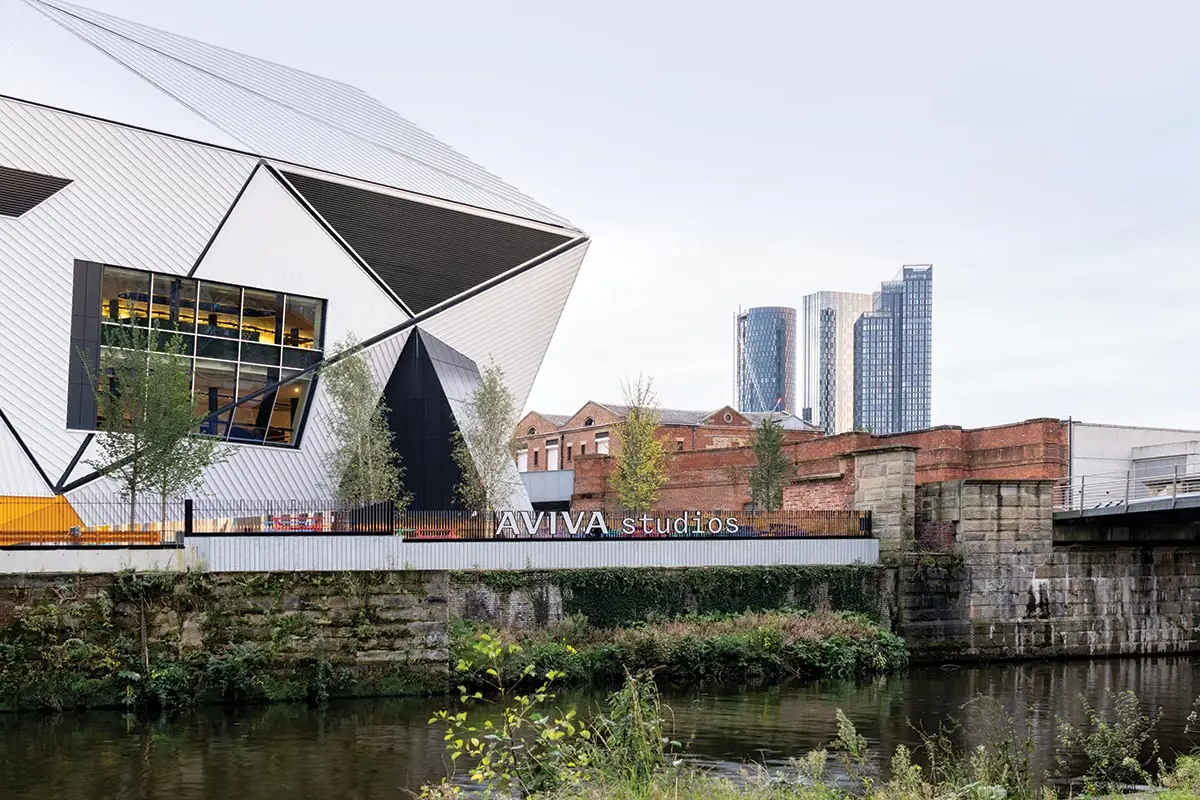
The corrugated metal-clad Hall, which contains fixed and flexible seating, fronts the River Irwell. Photo © Marco Cappelletti, click to enlarge.
In fact, OMA’s building contends with a road beneath it (a pair of purpose-built vehicle lifts allow for two 50-ton trucks, with trailers up to 40 feet long, to access the Warehouse), and an elevated railway line incorporated into it (its 19th-century brick arches a stunning backdrop for the ground-floor loo).
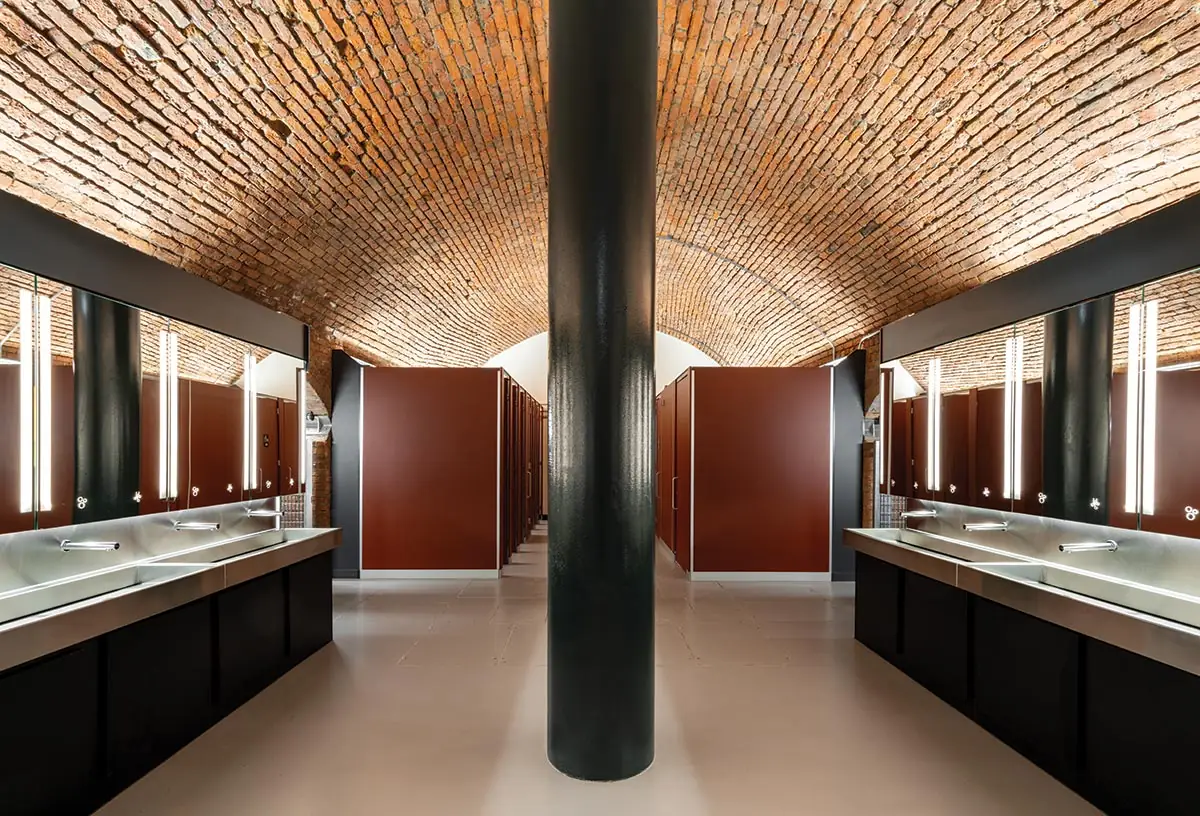
Bathrooms are located beneath existing railway arches. Photo © Marco Cappelletti
By embracing these conditions, OMA’s design fits so discreetly into its surroundings that, approaching the building on foot from either side, you might not notice it at all. Even the faceted Hall, with all its jagged edges, only comes fully into view when seen from the river.
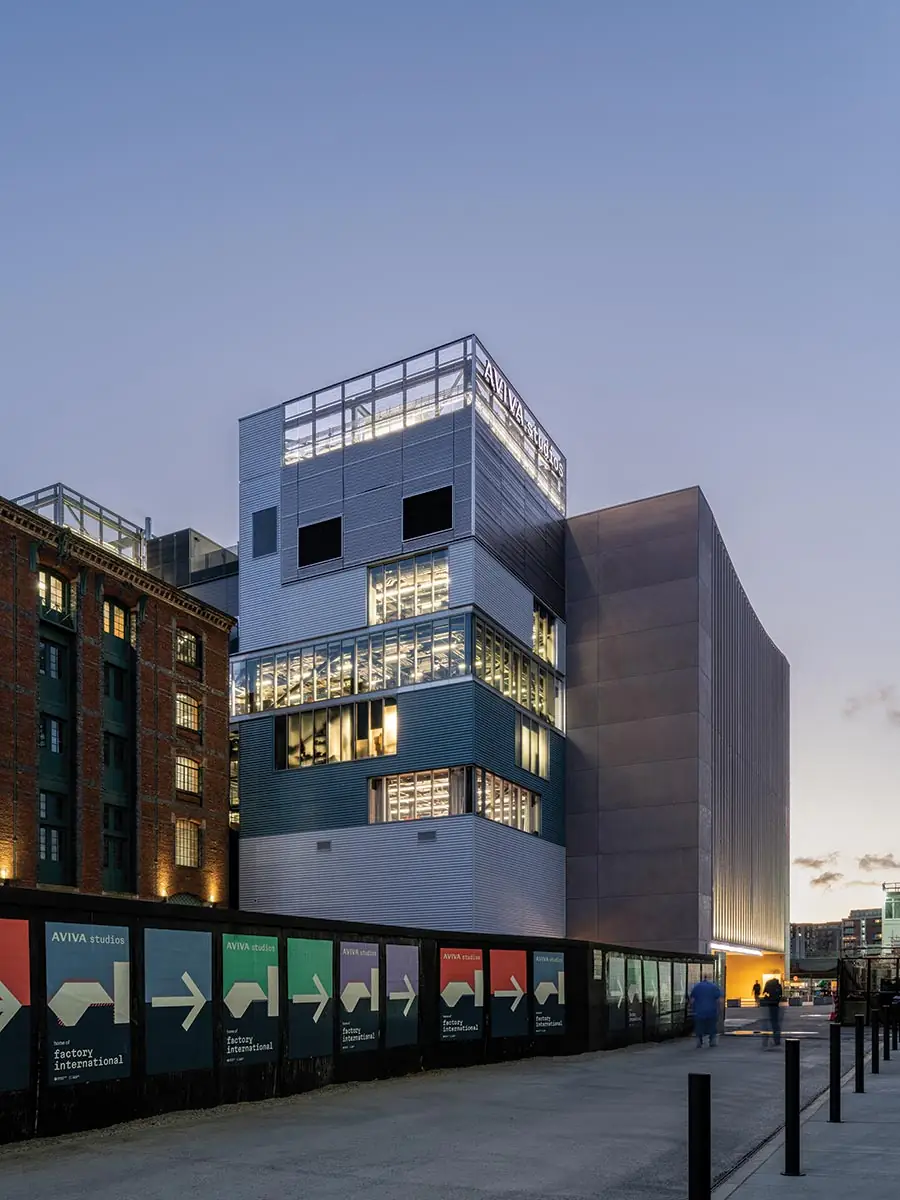
1
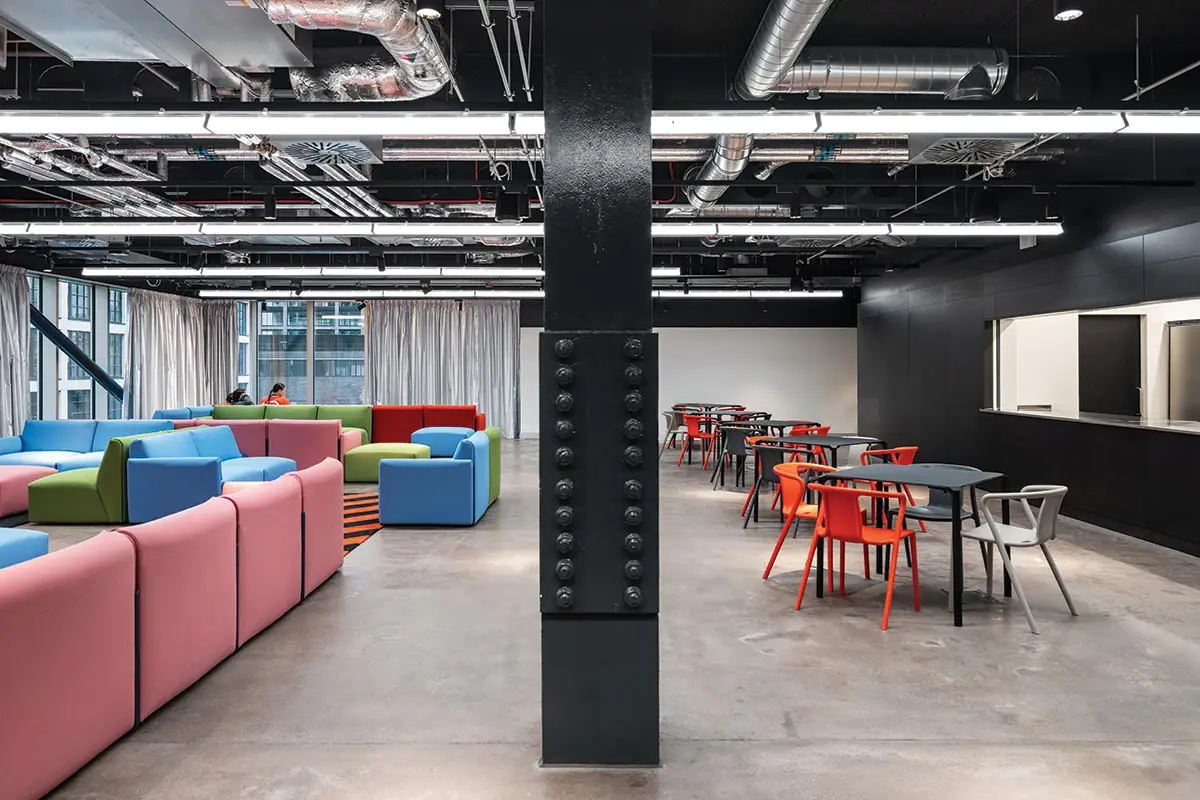
2
A tower (1) contains space for the performing artists (2). Photos © Marco Cappelletti
“These new high-rises changed the whole area,” says van Loon. “But, when we started here, there were a lot of warehouses, and we wanted to keep that heritage.” Using “the most simple material you can imagine,” van Loon clad the Hall and rear towers in corrugated metal. For the Warehouse facades, she went a step further, reappropriating corrugated sheet piles, utilized for flood defense in riverbanks and dikes, often in steel but in this case precast concrete. “I really love that material,” she adds, noting, “It’s so Manchester.” (And Dutch.)
Things are kept simple inside as well, with interiors, including the expansive lobby and back-of-house spaces, as stripped down as possible. Pops of color enliven artist areas in the towers, however, and the theater seating’s bright yellow velvet upholstery is a welcome surprise.
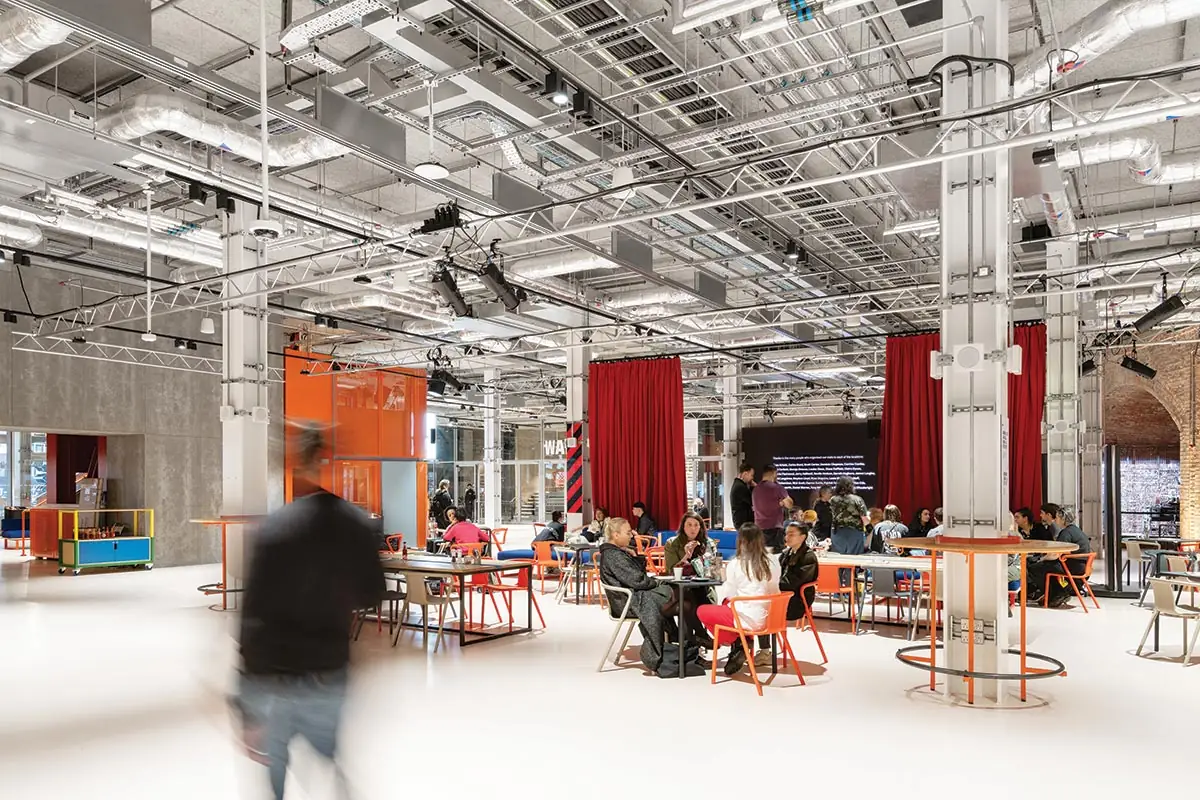
There are three entrances into the expansive lobby. Photo © Marco Cappelletti
But at the heart of the complex is a blank canvas. At 108 feet wide, 210 feet long, and nearly 70 feet high—with a theater grid spanning the entirety of the area—the Warehouse provides tremendous flexibility for exhibitions but, more so, for ballet, theater, music, and cross-art performances. Supersize movable “multiwalls” enable a number of configurations within the vast space. By “plugging into” the Hall, that auditorium’s stage can be extended deep into the Warehouse.
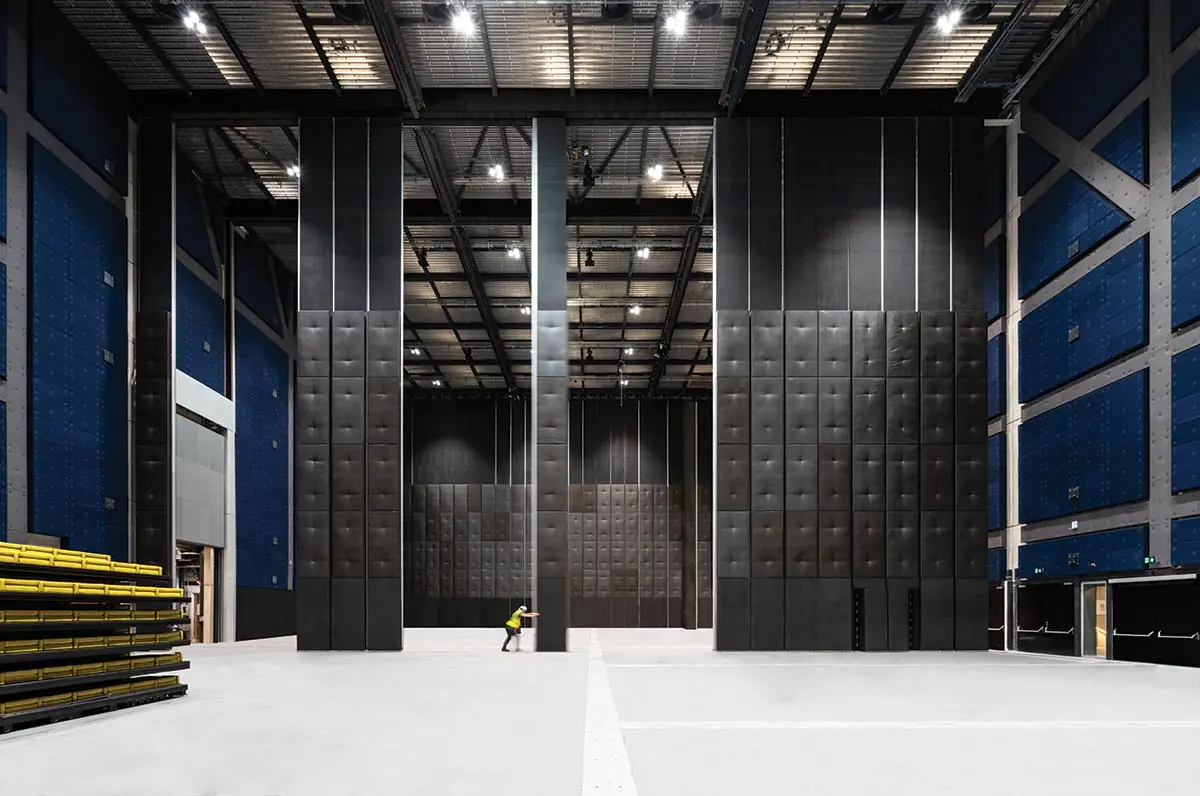
The Warehouse features two supersize movable walls enabling multiple configurations within that vast space. Photo © Marco Cappelletti
Long before it was complete, the building had been activated several times, particularly during MIF earlier this year, with an installation of Japanese artist Yayoi Kusama’s giant inflatables, and during the festival in 2021, when British theatrical director Deborah Warner staged a sound-and-light installation. For the opening production after the building was inaugurated in October, Manchester’s own Danny Boyle specially created a performance that incorporates dance and immersive design to stretch across the building’s flexible spaces.
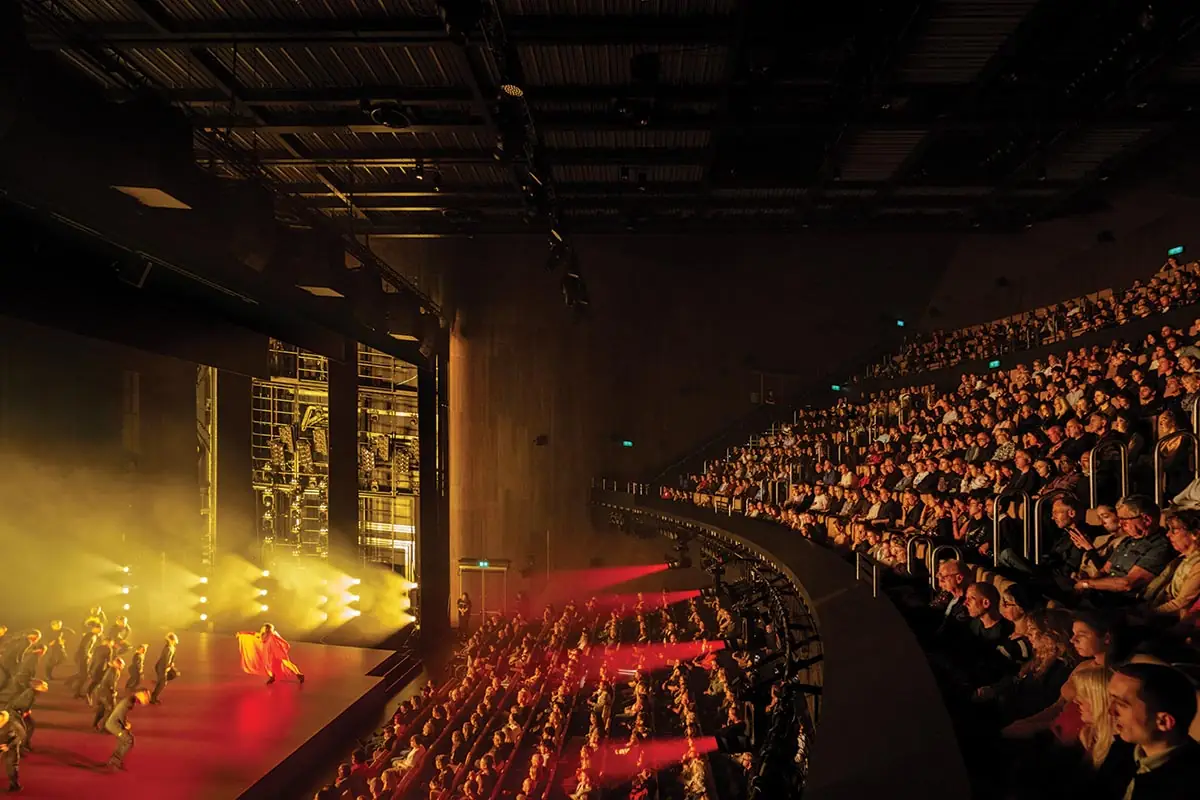
Directed by Danny Boyle, the opening production, Free Your Mind, was specially created to stretch across the building’s flexible spaces. Photo © Marco Cappelletti
Aviva Studios’ location within the center of the city—and now in close proximity to a rising residential development—presented challenges, however, with respect to noise control. The design team provided sound insulation by creating an acoustic cavity, which doubles as circulation space around the Warehouse, between two layers of thick concrete.
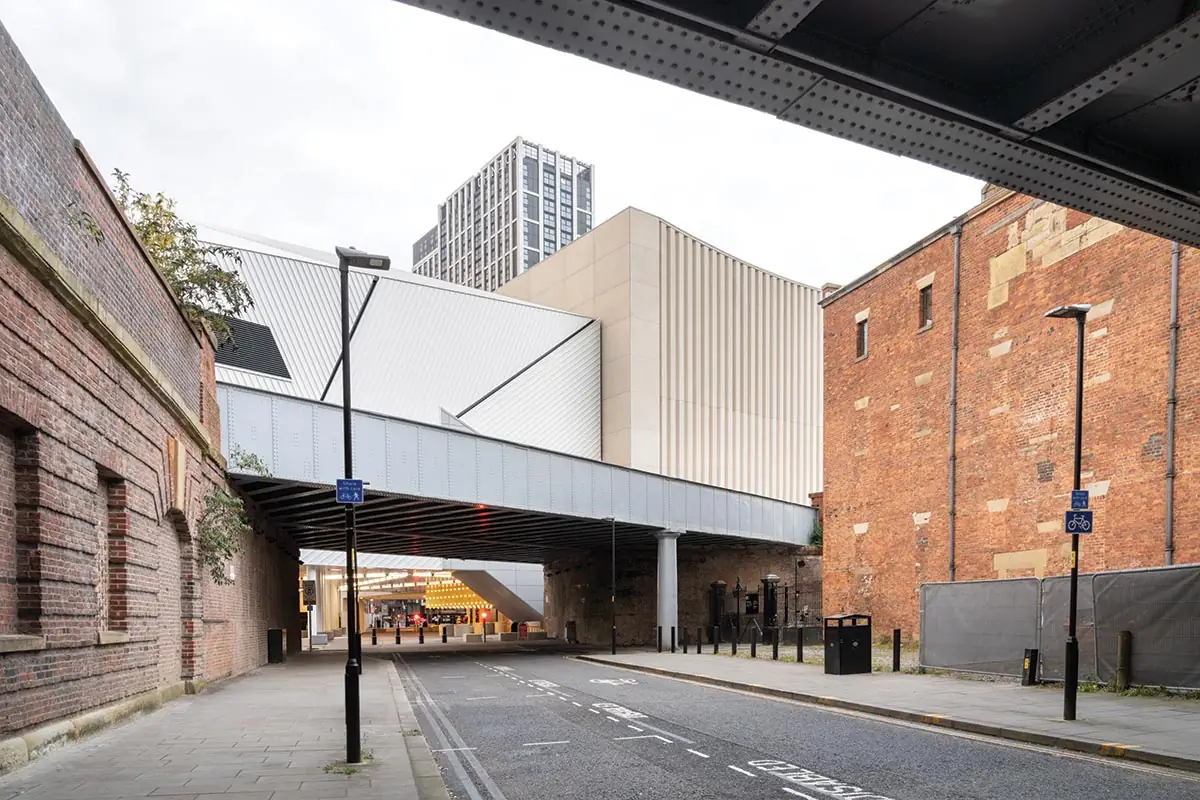
3
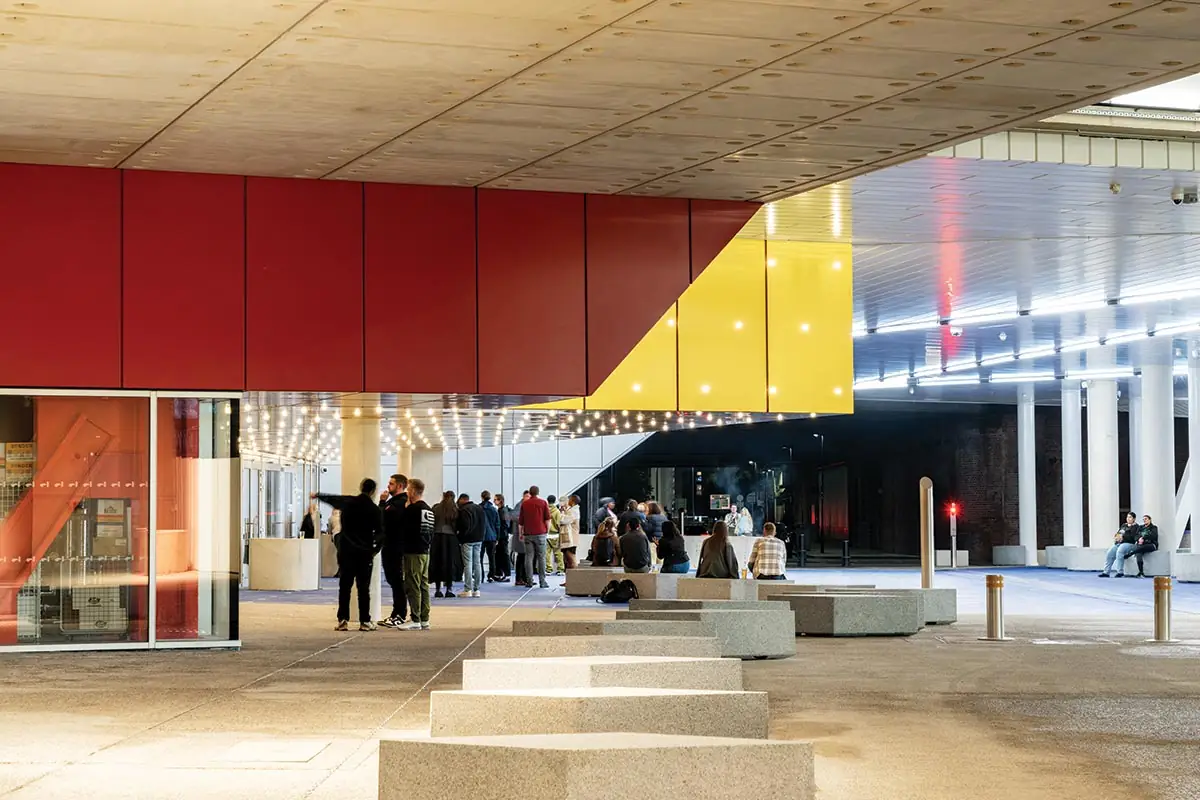
4
The building is discreetly nestled within, and incorporates, nearby industrial structures (3), but erupts with lights and color at its marquee-like main entrance (4). Photos © Marco Cappelletti
The Arts Council England made the biggest investment in the national agency’s history by contributing 50 percent of the cost to build Aviva Studios—a price tag that, at just under $300 million, ballooned with the construction’s progressing through Covid delays and other obstacles, but one that is still considerably less than similar performing arts buildings recently completed in the U.S. By comparison, New York’s newly opened and also ultraflexible Perelman Performing Arts Center, by OMA alum Joshua Ramus of REX, cost upward of $500 million (though that building, at the World Trade Center site, rests atop even more complex infrastructure and is wrapped in 5,000 marble panels, not corrugated metal and sheet piles). The cost for the Lindemann Performing Arts Center at Brown University, also by REX and, again, ultraflexible, was not disclosed, but one can safely assume that the technology and mechanisms needed to make these spaces so flexible come with a heavy price tag. The question remains, “Is it worth it?”
These three projects, opened within a month of each other, will either make the case for all that flexibility, or against it.
Click plan to enlarge
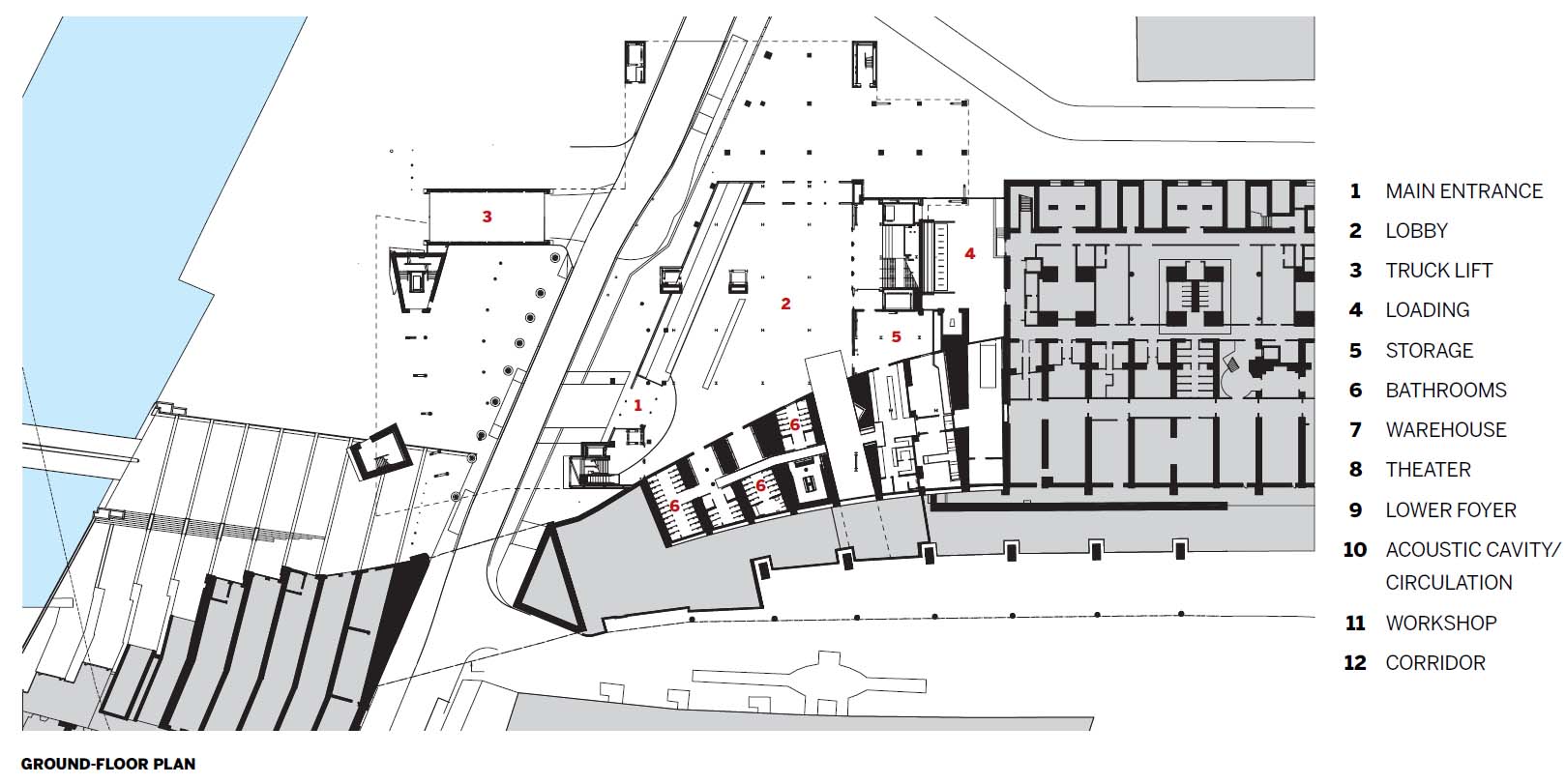
Click plan to enlarge
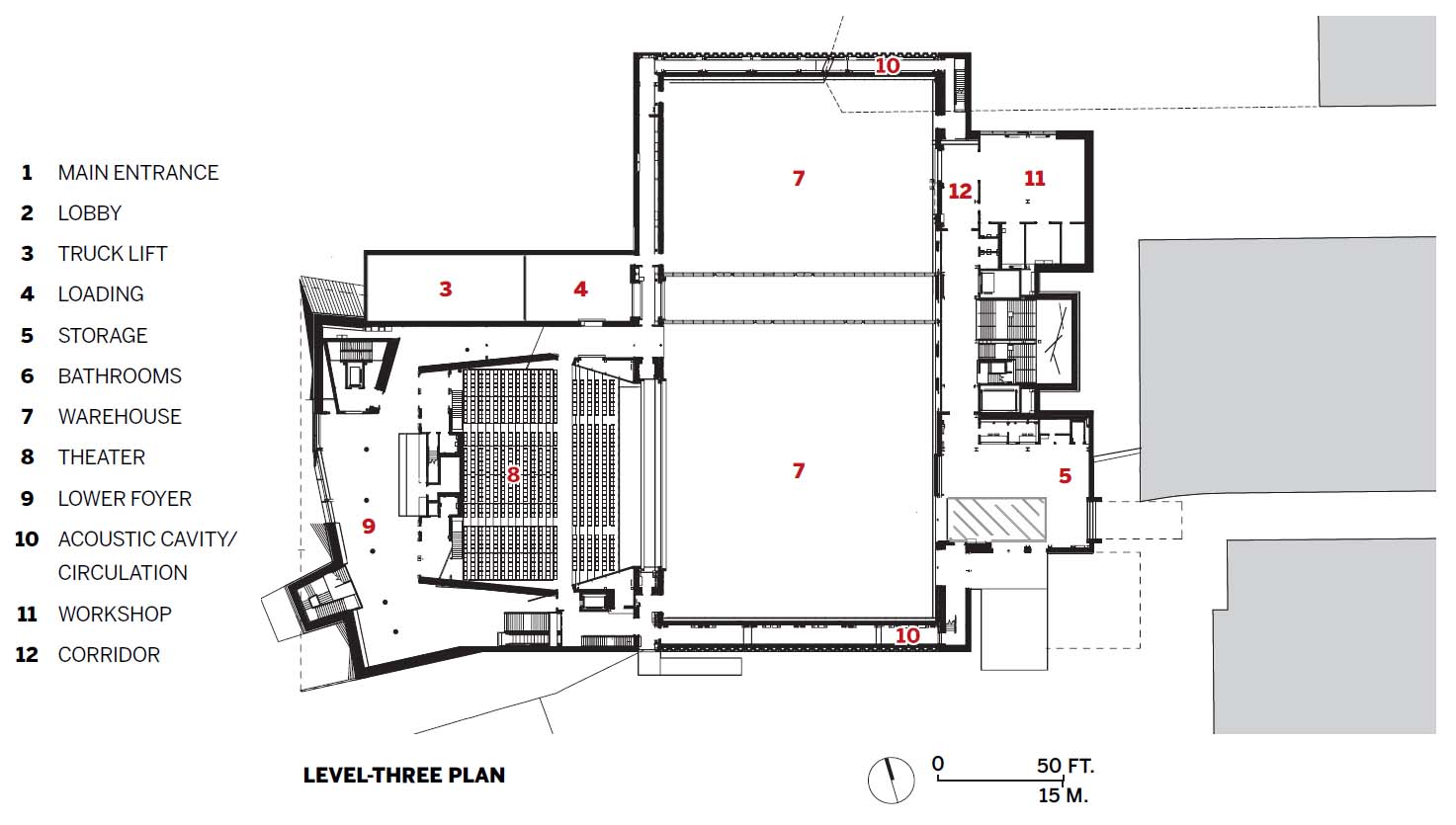
Click section to enlarge
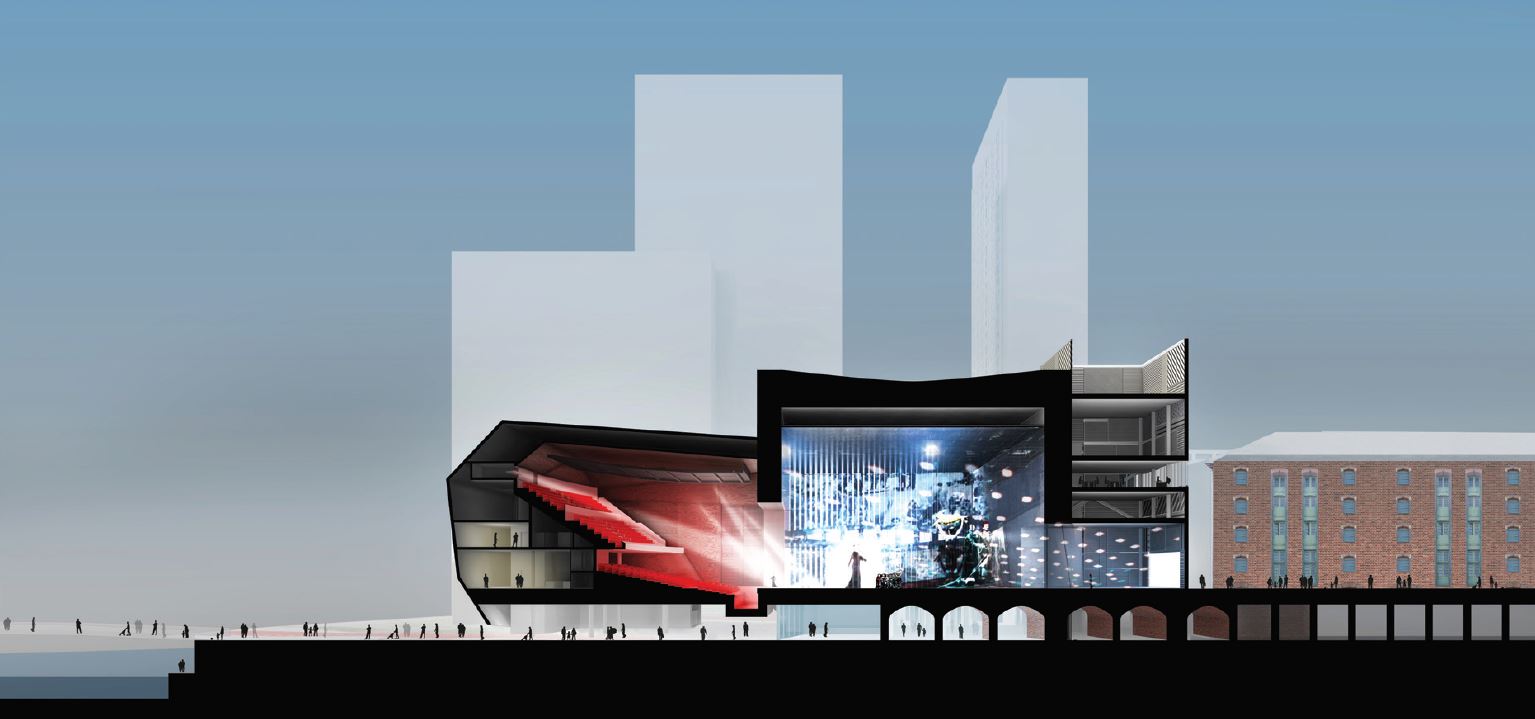
Credits
Architect:
OMA — Ellen van Loon (partner in charge); Rem Koolhaas; Carol Patterson (project director); Gary Owen (project manager)
Associate Architects:
Allies and Morrison, Ryder Architecture
Engineers:
Buro Happold, BDP Engineering (structural/civil)
Consultants:
Level Acoustics (acoustics); Planit (landscape); WSP (fire); Pearson Consult (vertical transport); Peter Saville and NORTH Design (graphic design); Ben Kelly and Brinkworth (FF&E); Charcoal Blue (stage engineering)
General Contractor:
Laing O’Rourke
Client:
Manchester City Council, Factory International (Manchester International Festival)
Size:
144,000 square feet
Cost:
$295 million
Completion Date:
October 2023
Sources
Metal Façade / Curtain Wall:
Prater
CLT:
Hybrid Structures
Theater Seating:
Jezet
Retractable Seating:
Master Industrie
Movable Partitions:
Multiwal





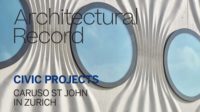
Post a comment to this article
Report Abusive Comment